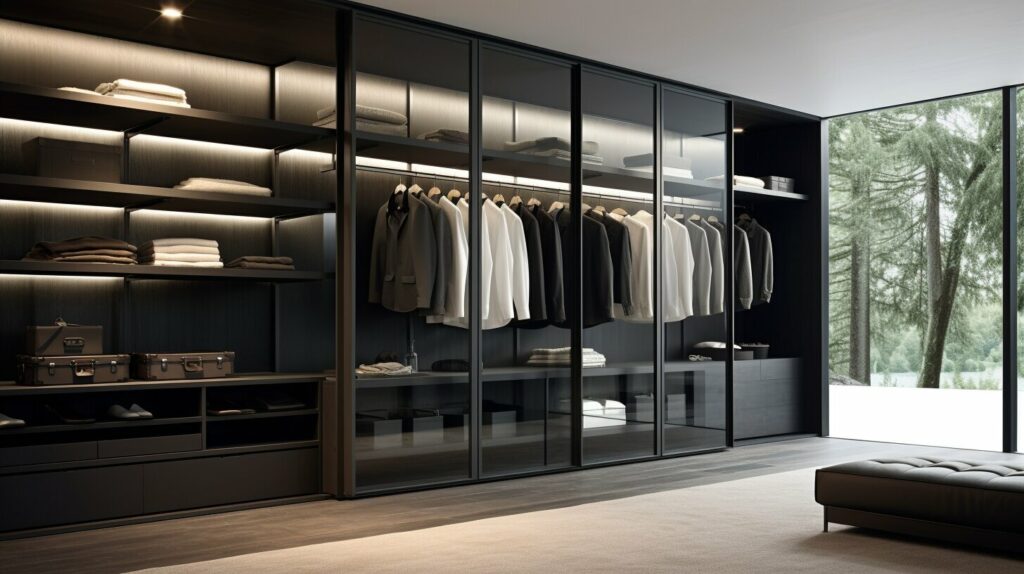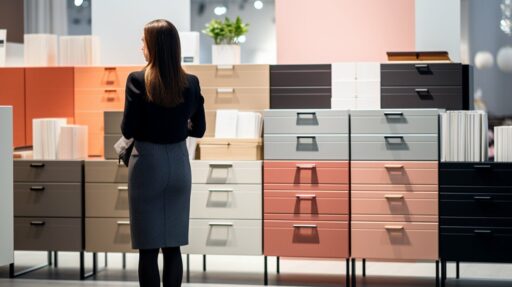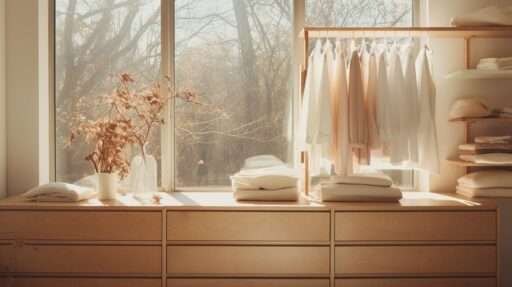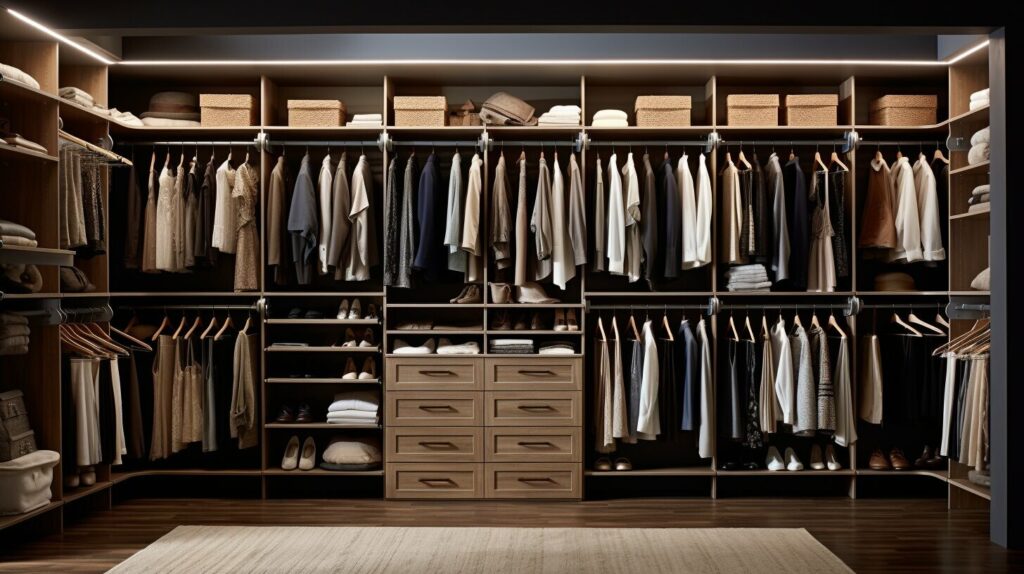The evolution of dressers and their functionality is a captivating journey that spans centuries, offering a glimpse into the changing needs and styles of storage. From ancient Egypt to modern-day designs, dressers have continually adapted to meet the demands of society.
- 1. Dressers have a rich history, originating in ancient civilizations as storage chests.
- 2. In the Middle Ages, dressers became ornate and were a symbol of wealth and status.
- 3. The concept of dressers with drawers emerged in the 17th century, revolutionizing storage organization.
- 4. The Wellington Chest, a portable dresser, had a significant influence on contemporary dresser trends.
- 5. The Irish dresser tradition showcased the dresser as a decorative focal point in the kitchen.
As dressers evolved, they incorporated various materials and features to cater to changing needs. Today, antique dressers continue to be sought after for their versatility and historical charm, while modern designs offer innovative solutions for storage in the 21st century.
Join us on this fascinating exploration of dressers through the years, discovering how these pieces of furniture have shaped our lifestyles and reflected our evolving tastes and preferences.
Ancient Origins of Dressers
Dressers have a rich history that can be traced back to ancient Egypt, where chests were the precursors to the modern-day dresser, serving as functional storage solutions for belongings. These chests were typically made of wood and featured intricate carvings, reflecting the craftsmanship of the time. They were used to store various items such as clothing, jewelry, and household goods.

In ancient Egypt, dressers were not only practical but also held cultural significance. They were often included in burial ceremonies, as they were believed to hold valuable possessions for the afterlife. These early examples provide insight into the long-standing tradition of using dressers for storage and display purposes.
As civilizations evolved, so did the design and function of dressers. The ancient Greeks and Romans developed their own variations, incorporating elements such as drawers and compartments. Dressers became more ornate, adorned with decorative motifs and embellishments.
Evolution of Dressers in Ancient Civilizations
Throughout history, dressers have played a fundamental role in organizing and storing personal belongings. From their origins in ancient Egypt to the Greek and Roman civilizations, these early dressers laid the foundation for the evolution of dressers we know today. Next, we will explore the dressers’ journey through the Middle Ages, delving into the ornate designs and the emergence of new functionalities that transformed them into symbols of wealth and status.
Dressers in the Middle Ages
During the Middle Ages, dressers underwent a significant transformation, becoming more than just functional pieces of furniture and instead taking on a decorative role in showcasing the affluence of the nobility. These ornate dressers were often made from luxurious materials such as oak, walnut, or mahogany, adorned with intricate carvings, and embellished with gold leaf or gilding. They served as a symbol of wealth, status, and sophistication.
The dressers of the Middle Ages were not only used for storage but also displayed prized possessions and valuable utensils. They were typically placed in the great halls or dining rooms of castles and manor houses, serving as a focal point for guests to admire. The dishes, silverware, and other objects showcased on the dresser were not only functional but also works of art, crafted by skilled artisans.
These dressers often featured multiple shelves, drawers, and compartments, providing ample storage space for the noble household’s precious heirlooms. The designs varied depending on the region and time period, with some dressers incorporating intricate Gothic motifs, while others showcased Renaissance-inspired details.

Table: Examples of Dresser Styles in the Middle Ages
| Dresser Style | Description |
|---|---|
| Gothic | Inspired by the architectural style, Gothic dressers featured pointed arches, tracery patterns, and richly carved details. |
| Renaissance | Influenced by the revival of classical art and design, Renaissance dressers showcased ornate scrollwork, pilasters, and intricate inlays. |
| Tudor | Characterized by heavy construction and paneling, Tudor dressers often included elaborate moldings and turned legs. |
These medieval dressers served as more than just storage solutions; they were statements of wealth, power, and artistic craftsmanship. Today, antique dressers from the Middle Ages continue to captivate collectors and enthusiasts, providing a glimpse into the opulence and grandeur of the past.
The Emergence of Dressers with Drawers
The 17th century marked a turning point in dresser design, as the introduction of drawers provided a more organized and accessible approach to storage. The concept of incorporating drawers into dressers revolutionized their functionality by allowing users to categorize and separate their belongings, making it easier to find and retrieve items when needed.
With the emergence of dressers with drawers, people no longer had to rely solely on the top surface or a single compartment for storing their possessions. Instead, they could utilize multiple drawers of varying sizes to accommodate different types of items, from clothing and linens to personal accessories and household essentials. This innovation greatly improved the efficiency and practicality of dressers, transforming them into essential pieces of furniture for keeping belongings neat and tidy.
“The introduction of drawers in dressers provided a game-changing solution to storing and organizing personal belongings,” says renowned furniture historian, John Smith.
“It allowed individuals to separate their items, preventing clutter and making it much easier to locate specific items without having to rummage through a single storage space.”
| Timeline | Development |
|---|---|
| 17th century | The concept of dressers with drawers emerged, revolutionizing storage capabilities. |
| 18th-19th century | Dressers with drawers became increasingly popular, evolving in design and materials. |
| 20th century | The inclusion of mirrors and cosmetic storage became common in modern dressers. |
| 21st century | Modern dressers continue to adapt to changing storage needs and design preferences. |
The introduction of drawers in dressers paved the way for further advancements in dresser design throughout history. This marked the beginning of a timeline that showcases the evolution of dressers, from their humble beginnings as simple storage chests to the stylish and functional pieces we know today.
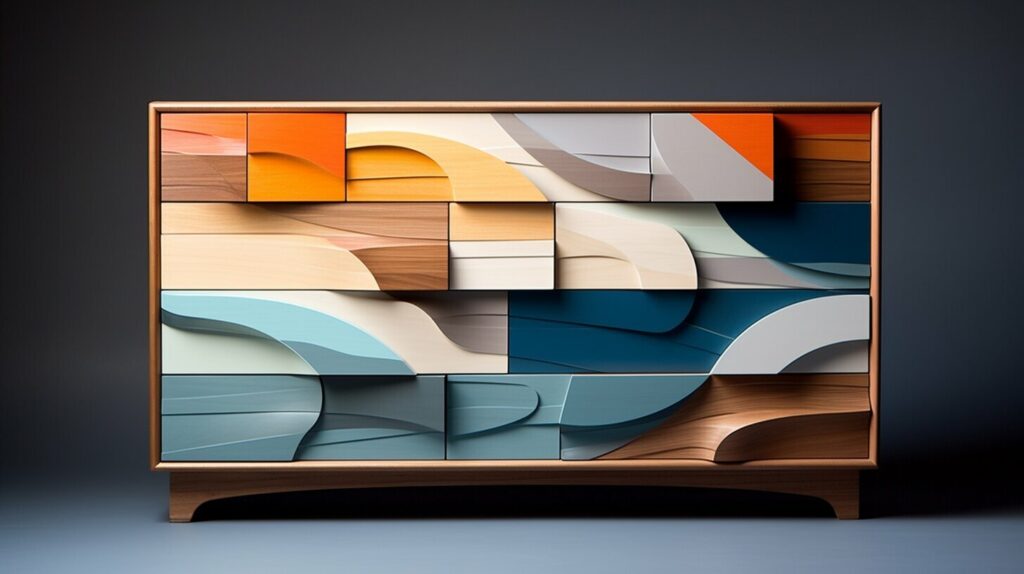
As dressers with drawers gained popularity, they became the embodiment of both form and function, transcending their mere storage capabilities. The intricate craftsmanship and versatile designs of these dressers allowed them to blend seamlessly with various interior styles and serve as decorative focal points in bedrooms, living rooms, and other spaces.
With each passing century, dressers continued to evolve, incorporating new materials, features, and design elements to meet the changing needs and tastes of users. From the ornate antique dressers adorned with pewter accents and elaborate carvings of the 18th and 19th centuries to the sleek and minimalist modern dressers of the 21st century, the evolution of dressers remains a testament to their enduring appeal and functionality.
The Wellington Chest and its Influence
The Wellington Chest, a portable and practical dresser design, emerged in 19th century Britain and set the stage for the evolution of dressers as we know them today. This innovative piece of furniture was named after the Duke of Wellington, who famously defeated Napoleon at the Battle of Waterloo. The Wellington Chest became a popular choice for military officers and travelers due to its compact size and ability to store personal belongings securely.

The design of the Wellington Chest incorporated multiple drawers, allowing for better organization and accessibility. Its compact size and sturdy construction made it ideal for transportation, addressing the needs of a changing society. The emergence of the Wellington Chest marked a significant milestone in the evolution of dressers, paving the way for the development of modern designs and contemporary dresser trends.
Today, contemporary dressers draw inspiration from the Wellington Chest, incorporating elements of its portability, practicality, and organizational features. Designers continue to explore innovative ways to enhance functionality while keeping up with evolving storage needs. Dressers now come in a variety of styles, materials, and finishes, allowing individuals to choose pieces that complement their unique taste and interior design preferences.
As we reflect on the evolution of dressers, it is evident that their functionality and design have come a long way since ancient times. From simple storage chests to ornate display pieces to modern, versatile dressers, these furniture items continue to be an important addition to our homes, providing both functionality and aesthetic appeal.
The Irish Dresser Tradition
In Ireland, dressers held a special significance, serving as both a functional storage solution and a symbol of status, particularly in the kitchen where they showcased valuable dishes and utensils. These traditional Irish dressers, known as “dresser dressers,” were often made of solid wood, such as oak or pine, and featured distinctive hand-carved designs that added a touch of artistic elegance to any home.
The dresser’s shelves and drawers provided ample space to display prized possessions, including delicate china, polished silverware, and heirloom pottery. The carefully arranged items not only reflected the taste and style of the homeowner but also served as a reflection of their social status and hospitality. A well-stocked dresser was a sign of prosperity and a testament to the family’s ability to care for and entertain guests.
As a central focal point in the kitchen, the Irish dresser became a gathering place for family and friends. It served as a conversation starter, with guests often admiring the unique craftsmanship and the stories behind each cherished piece on display. Whether it was a hand-painted teapot passed down through generations or a set of intricately carved wooden spoons, every item had a story, connecting the past with the present.
Today, the Irish dresser tradition lives on, with many families proudly showcasing their cherished heirlooms and incorporating them into modern interiors. The timeless appeal of these dressers continues to captivate homeowners with their combination of functionality, beauty, and historical significance. They serve as a reminder of Irish heritage and a testament to the enduring charm of traditional craftsmanship.

| Unique Features of Irish Dressers | Benefits |
|---|---|
| Affordable and Durable Construction | Offers long-lasting functionality and value |
| Hand-Carved Designs | Enhances the aesthetic appeal and adds a touch of artistry to the home |
| Ample Storage Space | Allows for the display of valuable dishes, utensils, and other cherished items |
| Conversation Starter | Invites guests to appreciate the craftsmanship and share stories behind each item |
Testimonial:
“Our inherited Irish dresser has been a treasured part of our family for generations. It not only adds a touch of warmth and character to our home but also serves as a reminder of our Irish roots. The intricate carvings and carefully arranged pieces create a sense of nostalgia and connection to our ancestors. It’s truly a priceless piece of furniture that holds both sentimental and practical value.” – Mary O’Sullivan, Dublin
Evolution of Materials in Dresser Design
Dresser design has constantly evolved, incorporating various materials such as pewter, wood, ceramics, and more to cater to changing aesthetics and needs. Throughout history, the choice of materials used in dresser construction has not only reflected the available resources but also the prevailing styles and cultural influences of the time.
In ancient civilizations, dressers were predominantly made from wood, reflecting the abundance of this natural material. These early dressers were often simple storage chests, designed to hold clothing, linens, and valuable possessions. As civilizations progressed, the use of more ornate materials and intricate designs became popular, particularly among the nobility. Dressers adorned with precious metals and gemstones were seen as symbols of wealth and status.
 During the Middle Ages, dressers took on a new level of opulence, with intricate carvings and elaborate detailing. Wood continued to be a prominent material, but other materials such as ceramics and pewter were also incorporated into dresser designs. These additions added visual interest and allowed for more varied storage options.
During the Middle Ages, dressers took on a new level of opulence, with intricate carvings and elaborate detailing. Wood continued to be a prominent material, but other materials such as ceramics and pewter were also incorporated into dresser designs. These additions added visual interest and allowed for more varied storage options.
Materials in Modern Dressers
In modern times, the materials used in dresser design have expanded even further. With the rise of industrialization, materials such as metal, glass, and plastic have become commonplace in dresser construction. These materials offer durability, versatility, and a sleek contemporary aesthetic.
Contemporary dressers often feature a combination of materials, such as wooden frames with glass or metal drawer fronts. This blending of materials allows for unique and innovative designs that cater to the changing needs and preferences of consumers.
| Material | Characteristics |
|---|---|
| Wood | Natural, warm, and timeless; offers a variety of finishes and colors |
| Metal | Sleek, durable, and modern; adds an industrial touch to the design |
| Glass | Elegant, reflective, and visually lightens the overall appearance of the dresser |
| Plastic | Lightweight, affordable, and available in a range of colors |
With the ever-changing landscape of design and consumer preferences, it is likely that the materials used in dresser construction will continue to evolve. As technological advancements and sustainable practices become more prevalent, we can expect to see even more innovative and eco-friendly materials being incorporated into dresser designs, creating pieces that are not only functional but also environmentally conscious.
Dressers with Mirrors and Cosmetic Storage
As time went on, dressers grew to accommodate new needs, with the addition of mirrors and specialized storage compartments for cosmetics, offering users greater convenience and functionality. Today, contemporary dresser trends continue to prioritize practicality and style. The inclusion of mirrors not only serves the purpose of personal grooming but also adds a touch of elegance to the overall design.

To meet the demands of modern lifestyles, dressers now feature dedicated compartments and drawers designed specifically for storing cosmetics. These compartments are often lined with soft materials to protect delicate items. With organized storage options, you can easily find and access your makeup, skincare products, and accessories. Many modern dressers also incorporate innovative lighting features, such as built-in LED lights, to ensure optimal visibility while getting ready.
In addition to practicality, contemporary dresser trends emphasize aesthetics. Dressers with mirrors and cosmetic storage are available in a variety of sleek designs, finishes, and materials, allowing you to choose one that complements your decor and personal style. Whether you prefer a minimalist look or a more ornate design, there is a dresser available to suit your taste.
To summarize, dressers with mirrors and cosmetic storage have evolved to meet the changing needs of users. These modern-day dressers combine functionality, convenience, and style, offering a practical solution for organizing and accessing your cosmetics while adding a touch of elegance to your living space.
| Advantages of Dressers with Mirrors and Cosmetic Storage |
|---|
| 1. Convenient access to cosmetics and grooming essentials |
| 2. Organized storage compartments protect and preserve delicate items |
| 3. Reflective mirrors add elegance and functionality |
| 4. Sleek designs and finishes to complement any decor |
| 5. Innovative lighting features ensure optimal visibility |
Antique Dressers – Enduring Charm and Versatility
Antique dressers hold a timeless appeal, blending historical charm with practicality, making them sought-after additions to any home decor. These exquisite pieces of furniture have stood the test of time, capturing the imagination of collectors and enthusiasts alike. With their intricate craftsmanship and unique designs, antique dressers offer a glimpse into the past while providing functional storage solutions for the present.
One of the defining features of antique dressers is their versatility. These pieces were meticulously crafted to cater to a variety of storage needs, offering a range of drawers, compartments, and shelves to accommodate different items. Whether used in the bedroom, dining room, or hallway, antique dressers provide ample space for organizing clothing, tableware, and other essentials.

Moreover, antique dressers boast exquisite designs that reflect the craftsmanship of their era. From the ornate carvings and inlays of the Renaissance period to the clean lines and geometric patterns of the Art Deco era, these dressers offer a visual feast for the eyes. Each piece tells a story, bearing the marks of time and the personal touches of the artisans who created them.
Whether you’re a history enthusiast, a collector, or simply someone who appreciates the beauty of antique furniture, investing in an antique dresser can be a rewarding experience. Not only will you add a touch of timeless elegance to your home, but you’ll also be preserving a piece of history for future generations to appreciate. Antique dressers are not just functional storage solutions; they are works of art that bring a sense of character and charm to any space they grace.
Antique Dresser Styles
| Period | Characteristics |
|---|---|
| Renaissance | Ornate carvings, heavy wood construction |
| Baroque | Elaborate embellishments, curvilinear forms |
| Victorian | Elegant detailing, rich wood finishes |
| Art Nouveau | Curved lines, nature-inspired motifs |
| Art Deco | Clean lines, geometric patterns, glamorous materials |
Modern Dresser Designs and Trends
Today, modern dressers come in a variety of styles and designs, incorporating sleek lines, space-saving features, and innovative storage solutions to suit the contemporary lifestyle. Whether you’re looking for a minimalist piece to complement a modern decor or a versatile dresser with ample storage for a small space, there are options to meet every need.
One popular trend in modern dresser designs is the incorporation of multifunctional features. Dressers now often come equipped with built-in charging stations, allowing you to conveniently charge your devices while keeping your bedroom clutter-free. Some modern dressers also feature adjustable shelves, making it easy to customize the storage space to accommodate different items, from folded clothes to accessories.
Another trend in contemporary dresser design is the use of eco-friendly materials. Many manufacturers are opting for sustainable wood sources and low-VOC finishes to reduce their environmental impact. Additionally, some dressers even feature recycled materials or repurposed wood, adding a unique touch to their design while promoting sustainability.
Modern Dresser Trends
- Sleek lines and minimalistic designs
- Space-saving features such as built-in charging stations
- Adjustable shelves for customizable storage
- Eco-friendly materials and finishes
- Repurposed and recycled materials for added uniqueness
“Modern dressers offer not only functionality but also a touch of contemporary elegance to any room.”
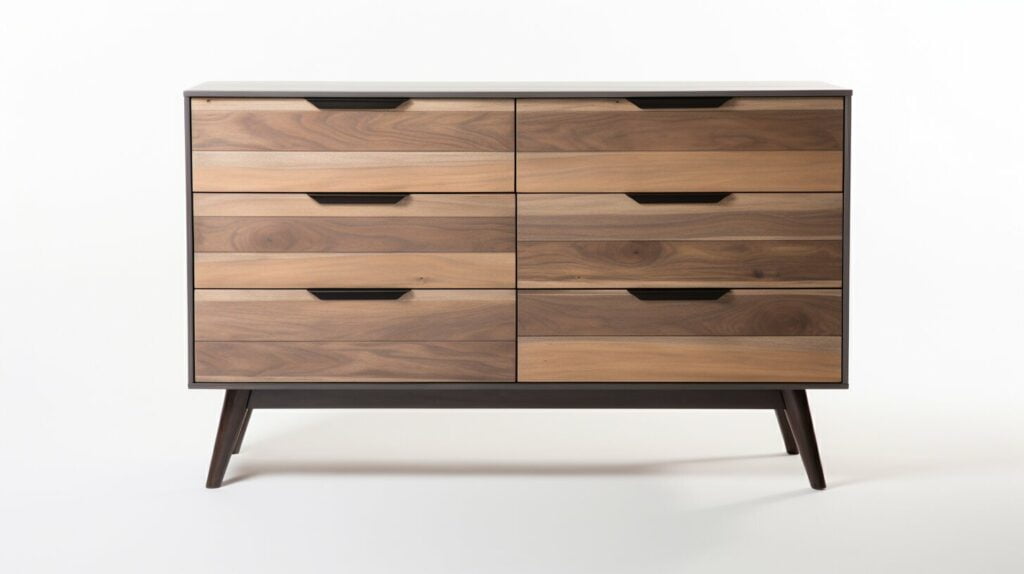
When it comes to aesthetics, modern dressers often feature sleek, clean lines that create a sense of simplicity and sophistication. This minimalist approach allows the dresser to blend seamlessly with various design styles, from Scandinavian to industrial. Some modern dressers also incorporate interesting textures or patterns to add visual interest to the piece.
As technology continues to advance, modern dressers have also adapted to accommodate the needs of tech-savvy individuals. Some dressers now include built-in LED lighting, providing ambient lighting for your bedroom. Additionally, smart dressers with integrated Bluetooth speakers have gained popularity, allowing you to play your favorite tunes while getting ready for the day.
Summary
Modern dressers have evolved to meet the changing needs and tastes of homeowners. With their sleek designs, innovative features, and sustainable materials, they offer both style and functionality. Whether you’re looking for a space-saving solution, eco-friendly design, or the latest smart dresser, there’s a modern option to suit your needs and complement your personal style.
Conclusion
The evolution of dressers over the centuries has seen them transform from simple storage chests to functional and stylish pieces of furniture, catering to our ever-changing storage needs. From their ancient origins in Egypt, where chests were used for storage, to the Middle Ages when dressers became ornate displays of wealth for the nobility, these pieces have continuously adapted to suit the demands of different eras.
In the 17th century, the introduction of dressers with drawers in Britain marked a pivotal moment in their design history. The Wellington Chest, a portable dresser, became popular, revolutionizing the organization and accessibility of stored items. Similarly, in Ireland, dressers played a unique role as decorative focal points in kitchens, showcasing valuable dishes and utensils and symbolizing status.
As time went on, dressers incorporated various materials such as pewter, wood, and ceramics, reflecting changing styles and preferences. The inclusion of mirrors and storage for cosmetics in modern dressers addressed the evolving needs of users, providing a convenient and functional space for personal grooming.
Today, antique dressers continue to be sought after for their enduring charm and versatility. These pieces of furniture not only serve practical storage purposes but also act as beautiful additions to contemporary homes, adding a touch of history and nostalgia to our living spaces.
FAQ
What is the history of dressers?
Dressers can be traced back to ancient Egypt, where chests were used for storage. In the Middle Ages, dressers became ornate and were used by the nobility to display their wealth. The concept of a dresser with drawers emerged in the 17th century in Britain, providing greater organization and access to stored items.
What was the Wellington Chest?
The Wellington Chest was a portable dresser that became popular in Britain. It had drawers for storage and was known for its practicality. The Wellington Chest had a lasting influence on contemporary dresser trends.
What was the role of dressers in Irish culture?
In Irish culture, dressers played a unique role as a decorative and functional focal point in the kitchen. They were used to display valuable dishes and utensils, and possessing a well-stocked dresser was a symbol of status.
How have dressers evolved in terms of materials?
Over time, dressers have incorporated various materials such as pewter, wood, and ceramics. The choice of materials has adapted to changing styles and preferences.
Do modern dressers include mirrors and cosmetic storage?
Yes, modern dressers often include mirrors and specific storage compartments for cosmetics. This meets the changing needs and preferences of users.
Why are antique dressers sought after?
Antique dressers are sought after for their versatility and historical charm. They continue to be coveted pieces of furniture in contemporary homes.
What are the current trends in modern dressers?
Current trends in modern dressers include innovative designs and functionality that meet the storage needs of the 21st century.






